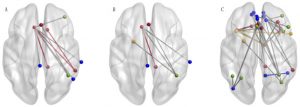Change the Brain to Improve Chronic Pain with Mindfulness
By John M. de Castro, Ph.D.
“we should consider one’s level of mindfulness when calculating why and how one feels less or more pain.” – Fadel Zeidan
We all have to deal with pain. It’s inevitable, but hopefully it’s mild and short lived. For a wide swath of humanity, however, pain is a constant in their lives. At least 100 million adult Americans have chronic pain conditions. The most common treatment for chronic pain is drugs. These include over-the-counter analgesics and opioids. But opioids are dangerous and highly addictive. Prescription opioid overdoses kill more than 14,000 people annually. So, there is a great need to find safe and effective ways to lower the psychological distress and improve the individual’s ability to cope with the pain.
There is an accumulating volume of research findings that demonstrate that mindfulness practices, in general, are effective in treating pain. Pain experiences are processed in the nervous system. The nervous system changes in response to how it is used and how it is stimulated in a process called neuroplasticity. Highly used areas grow in size, metabolism, and connectivity. So, the nervous system changes in response to chronic pain. Mindfulness practices in general are known to produce neuroplastic changes in the structure and activity of the brain. So, it’s likely that mindfulness practices somehow alter the brain’s processing of pain.
Acceptance and Commitment Therapy (ACT) is a mindfulness-based psychotherapy technique that is employs many of the techniques of Cognitive Behavioral Therapy (CBT). ACT focuses on the individual’s thoughts, feelings, and behavior and how they interact to impact their psychological and physical well-being. It then works to change thinking to alter the interaction and produce greater life satisfaction. ACT employs mindfulness practices to increase awareness and develop an attitude of acceptance and compassion in the presence of painful thoughts and feelings. ACT teaches individuals to “just notice”, accept and embrace private experiences and focus on behavioral responses that produce more desirable outcomes.
In today’s Research News article “Network Analysis of Induced Neural Plasticity Post-Acceptance and Commitment Therapy for Chronic Pain.” (See summary below or view the full text of the study at: https://www.ncbi.nlm.nih.gov/pmc/articles/PMC7823706/ ) Meier and colleagues recruited adult female patients who were diagnosed with chronic musculoskeletal pain. They were provided a 4-week group program of Acceptance and Commitment Therapy (ACT). It met twice a week for 90 minutes. They were measured before and after ACT for pain intensity, pain interference, anxiety, depression, sleep, quality of life, and cognitive ability. ACT was previously found to improve these symptoms of chronic pain.
They also had their brains scanned with functional Magnetic Resonance Imaging (f-MRI). The researchers examined the functional connectivity in 4 brain systems; the pain network, default mode network, frontoparietal network, and salience network. They found that after Acceptance and Commitment Therapy (ACT) there were significant reductions in functional connectivity within all four networks.
Previous work revealed that the chronic pain patients had very high levels of connectivity in these 4 networks. This hyperconnectivity was interpreted as a neuroplastic change in the brain produced by chronic pain. The present findings that Acceptance and Commitment Therapy (ACT) reduces this connectivity suggest that ACT normalizes the connectivity in these networks, making it easier for the patients to cope with their pain. This, in turn, improves their mood and quality of life.
So, change the brain to improve chronic pain with mindfulness.
“Mindfulness meditation can be used as a tool to create more awareness of the sensation of pain itself, without the judgment or resistance, and the affective and cognitive evaluation that we often project upon it. When we impose a litany of negativity upon our pain, it only becomes worse, and potentially elicits other difficulties including depression and anxiety. When we become more aware of what we are actually experiencing, without the overlay of our judgment, the overall perception of pain is reduced.” – Jennifer Wolkin
CMCS – Center for Mindfulness and Contemplative Studies
This and other Contemplative Studies posts are also available on Google+ https://plus.google.com/106784388191201299496/posts and on Twitter @MindfulResearch
Study Summary
Meier, S. K., Ray, K. L., Waller, N. C., Gendron, B. C., Aytur, S. A., & Robin, D. A. (2020). Network Analysis of Induced Neural Plasticity Post-Acceptance and Commitment Therapy for Chronic Pain. Brain sciences, 11(1), 10. https://doi.org/10.3390/brainsci11010010
Abstract
Chronic musculoskeletal pain is a costly and prevalent condition that affects the lives of over 50 million individuals in the United States. Chronic pain leads to functional brain changes in those suffering from the condition. Not only does the primary pain network transform as the condition changes from acute to persistent pain, a state of hyper-connectivity also exists between the default mode, frontoparietal, and salience networks. Graph theory analysis has recently been used to investigate treatment-driven brain network changes. For example, current research suggests that Acceptance and Commitment Therapy (ACT) may reduce the chronic pain associated hyper-connectivity between the default mode, frontoparietal, and salience networks, as well as within the salience network. This study extended previous work by examining the associations between the three networks above and a meta-analytically derived pain network. Results indicate decreased connectivity within the pain network (including left putamen, right insula, left insula, and right thalamus) in addition to triple network connectivity changes after the four-week Acceptance and Commitment Therapy intervention.
https://www.ncbi.nlm.nih.gov/pmc/articles/PMC7823706/
